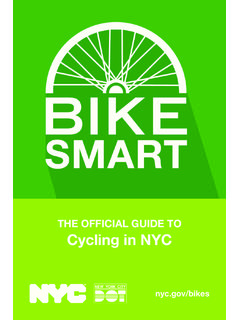Transcription of Lane's English - ESL-Online
1 1 Lane'sEnglishas a Second LanguagebyRichard R. Lane, SamoilovichBook 32 Copyright 1977; revised 1988, 2000, 2009 by Richard R. LaneAll rights reserved. No part of this book may be changed without written permission from world s most efficacious ESL series is given freely to all students and teachers of English by-Lane Box 17822 Stanford, CA 94305 USA3 TABLE OF CONTENTSPAGEF orwardLesson 1 - Europe and a second, a second, , all (complete), take (requires)by (not later than),to have: a) possessions, b) people, c) food/drink, d) mustevery - some - any - nopersons with "er" and "or"to make/to wantLesson 2 - The European Discovery of the New take: a) + noun, b) to personalize things, c) take place, d) required,e) + preposition, f) take to, g) take in, h) take part inmore, maybeto make: a) + noun b) + adjective, c) + verbcomparative and superlativeto give/to getLesson 3 - Colonies in North get.
2 A) give, b) + noun, c) + adjective, d) + prepositionword order of direct and indirect objectivesmuch - much more - much toometaphoric word useadjectives formed with "y"right + (time or place)over: a) under, b) = endto like/to knowLesson 4 - The American (instrument), though, as (role), would liketo go for a drive, ride, run, swim, walkcome to ..objective caseI know the and exclamations,nouns as adjectives,uses of prepositions: on, in,to see/to doLesson 5 - The American do: a) negative, b) question, c) repeated actions, d) emphasis, e) in place ofa known verb, difference between to make and to do,well (adverb),adjectives with "ful" and "less,"uses of prepositions: into, at, about, through, by, overto think/to of verbs: to be, to have, to go, to come, to put, to take, to give,to get, to do, to make, to think, to say, to see, to know, to like, to and their left blank5 FOREWORDThe English language is now closer to being the world's second language than any other since thedominance of Latin in Western civilization.
3 Today, English is the official or first language of 23 nations witha combined population of about 500,000,000. In addition, it is a co-official or widely used second languagein another 25 nations with more than 900,000,000. The best estimates are that 50,000,000 primary schoolstudents and 75,000,000 secondary school students are currently studying English as a second this can be added millions more who are studying English at the adult and college/university alone is said to have more people (500,000,000) studying English than the combined populations ofthe UK (61,000,000). the USA (305,000,000), and Canada (33,000,000) among whom 75%-80% claimEnglish as their mother tongue. As a student of English , you have a lot of company. You are part of a trulyglobal fact that English is a key to many doors technology, science, business, politics, culture accounts inlarge measure for its present attractiveness.
4 To any list of causes that might be offered for this widespreaduse, we should keep in mind that in sharp contrast to those who have made a near fetish out of theirlanguages, native speakers of English have not fixed it within any standard, except intelligibility. Theabsence of any high authority to decide what is and what is not " English " has given the language arelatively unfettered line of development which is probably more dynamic today than ever before. Englishhas never echoed to any call for "purity." Because it is not afraid of being corrupted and has such a hightolerance for new words and expressions, regardless of their origins, English is able to adapt to localconditions with have been many well-intentioned efforts directed at the needs of English learners.
5 The traditionalapproaches were entirely grammar based. These were later supplemented by frequency word came the communicative approach, which spawned audio-lingual methods seeking to teach the livinglanguage. A more recent development along this line has been Survival at these approaches in terms of progress in the language against time and effort expended, thecriteria of efficacy, we see that each is found seriously wanting. The grammatical approach to English wasnothing more than an extension of the traditional teaching of Greek and Latin. Students had a very difficulttime going from their passive knowledge to an active use of the language. Desiring to eliminate suchuseless sentences as "Lightning has struck my carriage," textbook writers turned to word counts only todiscover that students needed a relatively large vocabulary before much of consequence could be the word count approach strengthened reading and writing abilities, it did little to get students tospeak.
6 Thus the door was opened for the communicative approach which demanded students be taughtthe spoken language in daily situations. But, if we were to teach what students are likely to hear, we wouldbegin with a number of "four-letter" words and then graduate to "I ain't gonna" and "He done it." Since thisis unacceptable to most people, teachers and material developers have concentrated on getting and givinginformation in a number of different situations: the post office, the bus stop, the doctor's office, jobinterview, etc. Unfortunately, natural conversations in these various situations require a rather extensivevocabulary and command of sophisticated grammatical structures as well as a plethora of idioms. Much ofthis material seems designed to keep the teacher's interest, rather than approach the problem of languageacquisition from the student's perspective.
7 The communicative approach can not be faulted for its problem lies with its lack of any apparent criteria for introducing vocabulary and structures. Beginningstudents do not need ten ways to say "Hello."In my own search for an alternative to these approaches to English , I have been attracted by various ideasof simplification, particularly those of C. K. Ogden, the developer of BASIC English . I see simplification asprincipally a controlled and ordered approach to the language. There is no doubt in my mind that more than80% of the English language conforms to certain rules and patterns and if students can begin to see thisunderlying structure or logic, they can experience the joy of communication and gather the momentum tocarry them through the rough, illogical 's English as a Second Language is different because it offers the learner a step-by-step, cumulativeapproach that unlocks the logic of English .
8 It consciously excludes idiomatic word usage until the learner isprepared to deal with it. By eliminating the capricious and/or arbitrary elements of English , the Laneapproach presents the learner with a system, a reasonable, logical linguistic system that can be explained,and therefore understood and mastered. This approach is specifically designed for the learner who wantsto know why and the teacher who sees English as more than an inexhaustible jumble of words andexpressions best acquired with mother's total vocabulary of Lane's English as a Second Language is about 1200 words. By limiting thevocabulary, one of the major obstacles to learning English its non-phonetic spelling is skirted. Withapproximately 200 words to be learned in each book, students need not be burdened with spelling rulesand their numerous exceptions.
9 More than half of the words are only one syllable long, so they are easilymastered by speakers of languages that are not cognate to 1200 words were selected on the basis of usefulness, not frequency. The choice was made inaccordance with the linguistic tendency toward general and away from specific uses. This allows thevocabulary to be manipulated at various levels of sophistication. In the presentation of this vocabulary, theapproach is first to establish the primary meaning of each word and then to expand its usage in asystematic manner. With this expanded usage the 1200 words actually give a learner a level ofexpressability many times greater. This may be seen graphically as follows (in regard to body parts):1. BASIC MEANING:This is a Compound words:This is a shoulder Expanded usage:I am the head of my Metaphoric:She has a big Set came face-to-face with a Idioms (a):The walls have Idioms (b):He put his foot in his Sayings:His eyes were bigger than his of the primary advantages of this system is the development of a mind-set that causes learners toform their thoughts directly in English , rather than to think in their native languages and merely plug inEnglish words.
10 This is accomplished by concentrating on 12 verbs and 31 prepositions, which incombination give about 4,000 verb ideas. For instance, we are quite comfortable saying: I put my hand inmy pocket; I put my money in the bank; I put $1000 in a company; I put my heart in my work; I put a newsink in the kitchen; I put my ideas in English . The typical student, however, is more likely to express thesesame ideas with the discrete verbs: insert, deposit, invest, concentrate, install and translate. Theeconomy of time and effort in learning put in vs. six different verbs is obvious. What is not so obvious isthe methodology that will enable the learner to manipulate verbs and prepositions like a is achieved through the logical, controlled, sequential presentation of material. The approach of thistext takes phrasal or two-word verbs out of the idiomatic category by showing an inner logic to their the learner once grasps this inner-logic, he has a hard time going back to his native language to findequivalents and soon gives up the attempt.






